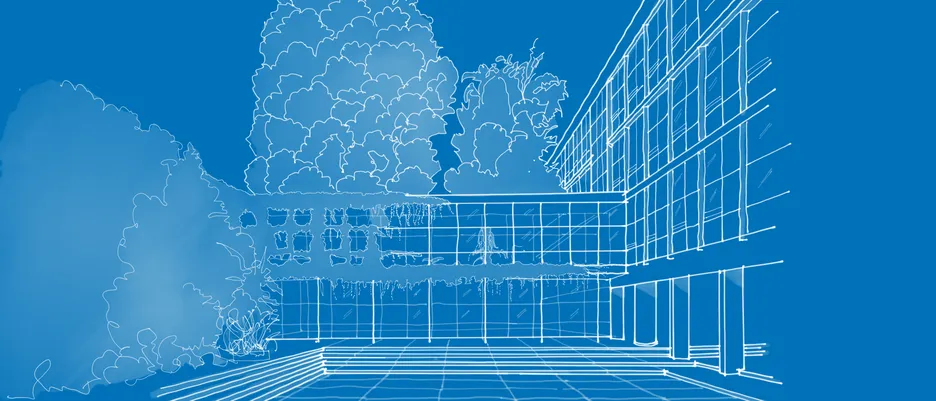
Development of exemplary reconstruction methods for the Gymnasium Hohenstaufen in Göppingen on a basis of measurements and analysis in reconstructed school buildings
A majority of existing school buildings in Germany has old building services, building defects and a bad building envelope. The resulting high energy demands are cost intensive for municipalities and do not meet the current aims for responsible use of resources. Due to these reasons many schools require basic renovation solutions.
A fundamental renovation is also required for the Hohenstaufen High School in Göppingen. The building was completed 1959 and hence built when new school buildings were built all across the country. The building is one of the first school buildings constructed with mainly prefabricated elements and marks the transition from manual construction to the assembly of industrially produced building materials. In early 2015 the building was included in the list of cultural monuments by the heritage agency as it is seen as a qualitative and structurally very well maintained example of the school architecture of the 1950s.
Due to the high age of the building the town Göppingen has recently recognized the need for renovation. However possible renovation measures are more difficult to implement or require more sensitivity due to the preservation orders for protected monuments which pose further problems that require solving. The partially uninsulated envelope, a custom procedure at the time, causes high transmission heat loss. According to the available energy certificate the building that is connected to the existing district heating system, requires 197.2 kWh/m²a of heating energy and 15.3 kWh/m²a electricity which reflects in the high running costs for the town. Nevertheless the planned renovation aims at improved qualities of stay apart from the mere reduction of the high energy consumption. Structurally the façade causes radiation asymmetry and cold air downdraughts at low outside temperatures causing a bad comfort situation for students seated close to the façade. But also the summer case is problematic: due to insufficient protection against summer overheating mainly the south oriented classrooms overheat which considerably reduces the willingness to learn and the attentive readiness of all those present.
Hence the planned renovation shall reduce the high energy consumption as well as increase the qualities of stay. The improvements to the indoor climate can be implemented without problems with the current technical possibilities. Nevertheless the question arises, whether the highly technological concept is the ideal solution or if intelligent renovation with simple technology can also achieve the desired comfort requirements in the sense of “simple building”. A reduced technological concept that equally decreases the investment and the running costs is an important point especially for school authorities. Aim of the research project is to provide decision makers in future school renovation projects with useful initial approaches for renovation measures.
For the development of these renovation measures the view will be expanded to other schools where renovations have already been performed. In the process at least five representative, renovated exemplary schools will be analyzed comprehensively to evaluate the implemented solutions and to draw conclusions for the renovation solutions to be developed for the Hohenstaufen High School.
Moreover general recommendations shall be developed about what needs to be considered in future school renovations and which implementing measures are not recommended. The developed recommendations for action that are based on the assumption of “simple building” lead to improved energy efficiency and qualities of stay while at the same time reducing running costs, basically ensure the transfer to other existing schools due to the high representative nature of the examined schools.